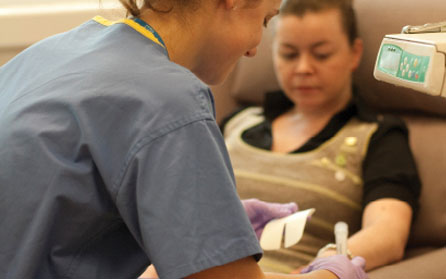
Haematological Conditions
Haematological conditions occur in the blood, bone marrow and immune system. A blood disorder or condition can also be a blood clotting or haemostatic condition or a condition of the vascular system.
Anaemia
Anaemia occurs when there are not enough red blood cells carrying oxygen to the cells in the body. Symptoms of anaemia are fatigue, rapid heartbeat, pale skin, chest pains, headache, cold hands, and shortness of breath. Some patients do not notice the symptoms of anaemia in the beginning stages. This haematological condition can lead to serious complications such as problems with the heart and even death.
There are more than four hundred types of anaemia that are divided into three different groups. Anaemia can be caused by a loss of blood, faulty production of red blood cells, and red blood cells destroyed by the body. These are how the various types of anaemia are categorized.
Coagulation Disorders
Blood clotting disorders are another haematological condition that can have serious consequences for individuals. Coagulation disorders can be a congenital condition or an acquired condition. There are a variety of reasons that blood clots abnormally such as vitamin deficiencies or liver disease. Blood clotting conditions occur when the blood does not clot effectively or when it clots excessively.
Coagulation disorders are divided into three different groups, which are haemophilia, idiopathic thrombocytopenic purpura and thrombosis. Bleeding disorders cover a wide range of conditions and the patient may bleed for a longer period than what is normal. The abnormality can be in the blood or the blood vessels or it may be in the ability of the blood to clot properly.
Leukaemias and Lymphomas
Leukaemia is a cancer of the blood and bone marrow that can be chronic or acute. With this condition, the patient stops producing healthy functioning red blood cells in the bone marrow. The condition can progress rapidly.
These are just a few of the many haematological conditions that occur in the body. The blood is made up of both liquids and solids. Solids in the blood are red blood cells and white blood cells. Plasma is the liquid part of the blood and is made up of salts, proteins and water.
Blood carries oxygen to all the organs, tissues and cells of the body. In a healthy system, the bone marrow replaces the constantly dying blood cells with new white and red blood cells. Blood disorders can include disorders of the platelets, and bleeding disorders.
Haematology is a type of internal medicine that studies the blood and the organs that form blood and diseases of the blood. Tests that a haematologist may order to diagnose a blood disorder are a complete blood count and tests to determine how well the blood coagulates. Doctors may specialize in the treatment of specific haematological disorders such as haemophilia or the inability to clot blood.
Treatment of haematological conditions include changes to diet, oral medications, transfusion, anticoagulation treatment, bone marrow transplant, chemotherapy and radiotherapy. The type of treatment used depends on a correct diagnosis of the haematological condition that the patient is suffering.
